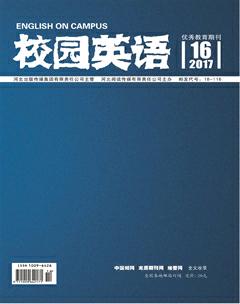Domestication and Foreignization in the Translation of the Names of Chinese Dishes
丁天伟
【摘要】随着全球化发展, 中餐愈受欢迎。但由于语言文化障碍, 中式菜名翻译形势严峻。归化与异化策略对处理翻译中的文化因素具有指导作用。通过对比分析, 本文认为该两种在菜名翻译中实用有效。归化的可接受性较高, 异化则保留中式菜名的文化底蕴,增进文化交流。
【关键词】归化 异化 中式菜名
【Abstract】With global development, Chinese food is of more popularity. Due to linguistic and cultural barriers, the translation of Chinese dish names faces tough situations. Domestication and foreignization can guide the translation of cultural content. Based on comparative analysis, the paper concludes domestication features higher acceptability while foreignization conserves the cultural content of Chinese dish names so as to promote cultural exchanges.
【Key words】domestication; foreignization; Chinese dish names
1. Introduction
With global development, China is among the worlds most popular travelling destinations now, attracting a huge number of overseas visitors every year. Chinese food might be a highlight that appeals to enormous foreign tourists so that the translation of Chinese dish names does affect their impressions on Chinese food and the economic returns of the catering industry.
2. The Application
Some Chinese dish names involve literary quotations and are modified by rhetorical devices. Cultural diversity and linguistic barrier bring about some difficulties to translating practices.
Domestication is target-culture-oriented that emphasizes natural and acceptable translation, while foreignization is source-culture-oriented highlighting the foreignness of source text, according to Lawrence Venuti.
2.1 Domestication in the Translation
As Chinese dish names embody diverse characteristics, domestication strategy might be a good choice for the terms with simple semantic meanings. It only one ingredient is signified without any connotation, the terms can be translated literally. If more than one ingredient, the “A with B” structure can be applied in translation. For instance:
“米面” Rice Noodles
“番茄炒蛋” Scrambled Egg with Tomato
“青椒肉片” Sliced Pork with Green Chili
Sometimes, dish names consist of cooking methods, which requires translators to signify. For example:
“熏魚” Smoked Fish
“炸鱼” Fried Fish
“白灼明虾” Scalded Prawns
“煎明虾” Grilled Prawns
The list shows that cooking methods might influence the results of translation. Hence, translators are also required to know English expression of cooking methods.
2.2 Foreignization in the Translation
Some names are really tough to translate for their connotative information. For instance, “全家福”, a Cantonese dish, is translated into:
Happy Family (Shrimp, beef, chicken, broccoli, mushroom, carrot, green pepper, onion &cabbage in sauce)
Stewed Assorted Delicacies
“全家福” means “happy family” in English. The dish covers several ingredients, which stand for family members gathering together for a reunion. The second version is a typical domestication-driven translation, which sings highly of the interpretive function. However, the first one not only conveys the introductive information but also preserves the fine connotation with annotation or explanation added.
Sometimes, dish names only act the representative or symbolic function.
“餃子”
“豆腐”
The translation of the two terms can be “dumpling” and “bean curd”. Compared to the transliteration of “Jiaozi” and “tofu”, the former may undermine the source-language culture. Moreover, there is still a slight difference between “dumpling” and “饺子”. The motivation of domestication is to get the foreigness adapted to the target-language culture, which can be regarded as an act of cultural colonization.
3. Domestication VS Foreignization
For the two, which one is more effective in the translation process? The purpose of the translation lies on interpretive function or cultural promotion and decides the choice of translation strategies, according to Zhang Min. Domestication can guide translators to deal with some ordinary situations. It emphasis translations interpretive function, ensuring that the target people understand the ingredients, flavors and cookery techniques of certain dishes. But on some special occasions, foreignization might be a good choice for the preservation of source-language culture.
4. Conclusion
Although as the two extreme poles, the strategies both have high effectiveness. The paper concludes that domestication is more extensively applied in the translation of Chinese dish names. However, foreignization is more practical in the cultural promotion. Thus, Domestication and foreignization should be applied critically based on certain translation purposes.
References:
[1]Venuti,L.Rethinking Translation:Discourse Subjectivity Ideology[M].London:Routledge Publishning,1992.

